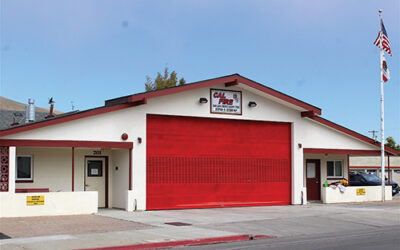The Morro Bay Fire Department has gotten a State grant to buy a new life-saving tool that will come in handy at the scenes of bad car crashes.
Fire Chief Daniel McCrain announced that the department has received a $48,000 grant from the State Department of Traffic Safety and will buy a new “Jaws of Life” extraction tool.
“This grant will have a significant impact on our ability to protect and serve our community,” Chief McCrain said, “allowing us to respond even more effectively in times of crisis. The funding will pay for modern rescue tools and provide training to first responders that is critical for the care of those injured in crashes.”
The new hydraulic powered tool will allow the department to “extricate patients more safely and effectively from modern vehicles,” Chief McCrain said. “The goal of this program is to reduce the time an accident victim is trapped in their vehicle, increasing the survivability for victims.”
With car crashes, as with all emergency incidents, time is critical. “Delays in providing care to crash victims,” Chief McCrain said, “impacts the ‘Golden Hour’ of survival, a core principle in the emergency medical services industry. Reducing the time it takes to get to the patient, treat what can be treated, and transport the patient to the hospital helps increase the chance for recovery.”
The money comes from the California Office of Traffic Safety, but originates at the National Highway Traffic Safety Administration and is amassed via federal fuel taxes.
Developed by George Hurst of the Hurst Power Tool Company, it was nicknamed the “Jaws of Life” for its role in snatching victims from the “jaws of death,” according to the Hurst website. They are also known as hydraulic cutting tools.
George Hurst, who had made a fortune helping make cars go faster, was at the Indy 500 in 1961, where he saw a horrific crash and the hour it took to free the driver from the wreckage. He reportedly thought there must be a better way.
“When he looked into the tools that rescue crews use,” the website said, “he found that traditional circular saws just weren’t, well, cutting it. The saws created sparks, increasing the risk of fire or explosion, and were extremely loud, which caused distress for the trapped victim. And, of course, they took too long to get the job done.”
Hurst patented the first “hydraulic rescue tool” in 1961. “The initial design was a 350-pound hunk of metal, far too large for even a team of rescuers to handle. In the span of a decade of tinkering and refining their rescue device, Hurst and (Mike) Brick downsized the prototype to only 65 pounds, calling it the ‘Hurst Power Tool.’”
Ten years later they took their refined devices to the SEMA Trade Show for specialty equipment and it was a big hit.
The various tools can cut (with a scissor-pinching movement) and spread, so in a crash, firefighters can cut the roof off a car, or use the spreader to pry open a smashed in door to get to a victim.
Running them with hydraulic oil means they don’t create sparks, which in a car crash can be dangerous and ignite spilled fuel.
George Hurst died in 1986 at age 59 and society owes him a debt of gratitude. “Thanks to Hurst’s innovative thinking, victims of car accidents across the globe have been able to escape serious injury and even death.”



